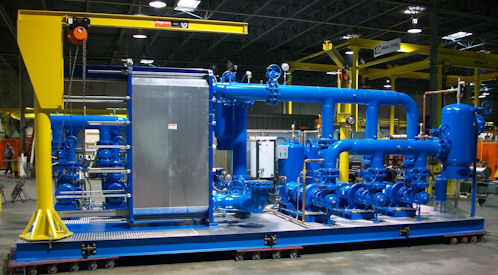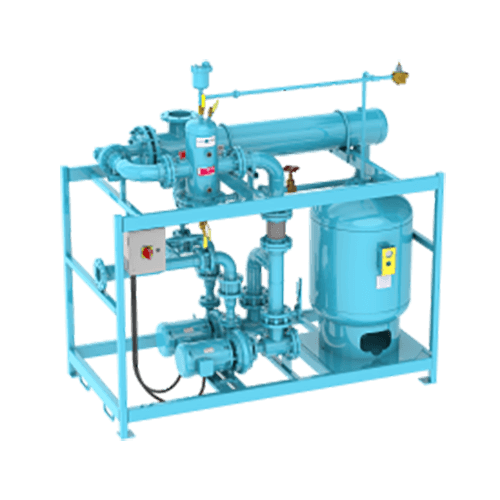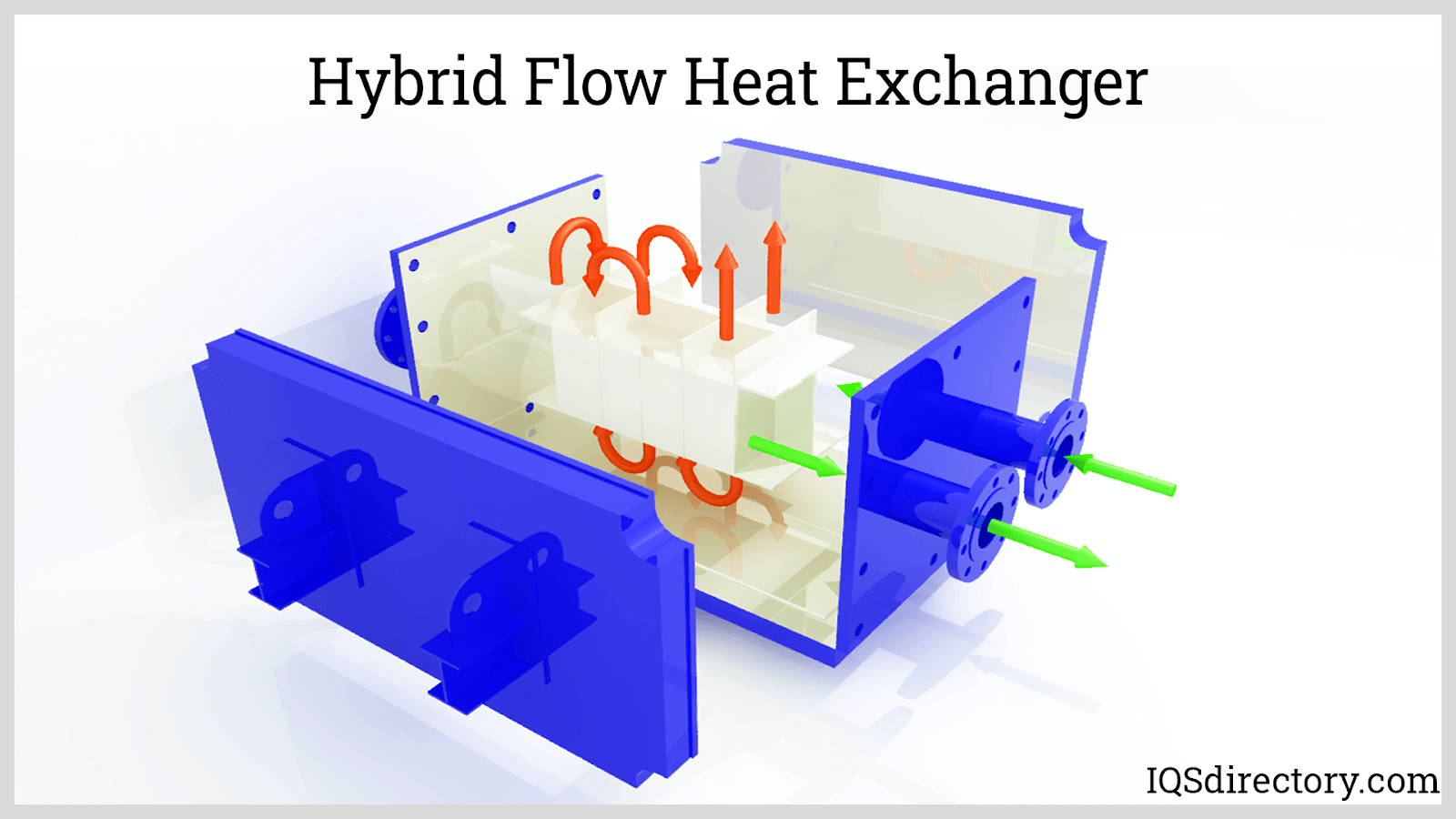A Comprehensive Overview to Choosing the Right Heat Transfer Solutions for Your Requirements
Picking the ideal Heat transfer system is necessary for functional effectiveness. Numerous systems provide to various needs, influenced by elements such as temperature level array and liquid kind. Recognizing the concepts behind Heat transfer, such as conduction, convection, and radiation, is critical. In addition, assessing energy sources and upkeep techniques can influence lasting efficiency. A closer examination of these considerations exposes how to tailor a system to certain needs. What should one prioritize in this complex decision-making process?
Recognizing Heat Transfer: Secret Principles and Principles
Heat transfer might seem like a simple concept, it encompasses an array of principles that are basic for efficient system design - DVS Heat Transfer Systems. Comprehending these principles is crucial for developers and engineers who aim to optimize thermal efficiency in various applications. Transmission, for instance, involves the transfer of Heat via strong materials, while convection refers to the activity of Heat within fluids. Radiation, one more essential principle, describes how Heat can be moved with electro-magnetic waves. Each of these devices plays a vital function in figuring out how energy moves within a system. By extensively understanding these principles, professionals can make educated choices, ensuring that Heat transfer systems run successfully and satisfy the specific demands of their applications
Kinds Of Heat Transfer Solutions: A Review
Understanding the concepts of Heat transfer lays the foundation for discovering the various kinds of Heat transfer systems available. Heat transfer systems can be classified largely right into 3 kinds: convection, conduction, and radiation. Conduction involves Heat transfer with strong products, depending on straight get in touch with in between bits. Convection, on the various other hand, happens in liquids (gases and liquids) where the activity of the liquid itself facilitates Heat transfer. Radiation includes the transfer of Heat with electromagnetic waves and does not call for a medium, permitting it to take place in a vacuum cleaner. Each kind of system has distinct qualities and applications, making it essential for people and organizations to thoroughly examine their specific demands when picking the most ideal Heat transfer remedy.
Applications of Heat Transfer Solutions in Different Industries
Heat transfer systems play an essential function throughout numerous markets, impacting efficiency and product high quality. In industrial production processes, they assist in specific temperature level control, while in food and drink processing, they ensure security and preservation. Additionally, cooling and heating and environment control systems depend heavily on efficient Heat transfer to maintain comfy settings.
Industrial Manufacturing Processes

Countless industrial production procedures count heavily on reliable Heat transfer systems to maximize performance and boost product quality. In markets such as metalworking, Heat exchangers play an essential role in keeping excellent temperatures throughout welding, casting, and building. These systems assure uniform Heat circulation, which is crucial for attaining desired material homes. In the chemical manufacturing sector, Heat transfer systems help with accurate temperature level control throughout responses, impacting yield and safety. In textile manufacturing, efficient Heat management is essential for coloring and finishing procedures, influencing shade consistency and material high quality. By choosing suitable Heat transfer innovations, makers can boost energy effectiveness and minimize operational prices, eventually leading to an extra affordable and sustainable manufacturing environment.
Food and Beverage Handling
Effective Heat transfer systems are just as vital in the food and beverage handling sector, where preserving ideal temperatures is important for food safety and security and quality. These systems play an essential role in procedures such as sterilization, cooking, and pasteurization, making sure that products are secure for usage and preserve their dietary worth. Heat exchangers, for circumstances, effectively transfer Heat between liquids, optimizing energy usage while reducing temperature level changes. In addition, refrigeration systems are basic for preserving disposable products and prolonging shelf life. The selection of Heat transfer innovation straight impacts operational performance and item honesty, making it important for food and drink producers to select the suitable systems customized to their certain processing demands. This cautious selection eventually adds to customer complete satisfaction and food safety and security.

Cooling And Heating and Climate Control
While lots of markets depend on Heat transfer systems for effectiveness, HVAC (Heating, Air Flow, and A/c) plays a company website necessary role in keeping interior climate control throughout different settings. These systems use Heat transfer principles to control temperature level, air, and moisture high quality, ensuring comfort and safety and security in property, industrial, and commercial environments. Properly designed a/c systems boost power efficiency, reduce operational prices, and minimize environmental impact. In business structures, for instance, effective climate control adds to worker productivity and consumer contentment. In industrial applications, heating and cooling systems assist keep ideal problems for equipment operation and item conservation. Selecting the best Heat transfer system is vital for conference specific environment control needs and achieving overall system efficiency.
Evaluating Energy Sources for Heat Transfer Solutions
In assessing energy resources for Heat transfer systems, a contrast of eco-friendly energy choices and fossil fuel considerations is crucial. Eco-friendly resources, such as solar and wind, offer lasting options that can lower ecological effect. Conversely, nonrenewable fuel sources continue to be common as a result of their established facilities and energy thickness, triggering a careful evaluation of both alternatives.
Renewable Resource Options

Nonrenewable Fuel Source Considerations
Examining fossil gas considerations is vital for the performance and sustainability of Heat transfer systems. Nonrenewable fuel sources, such as natural i thought about this gas, oil, and coal, are traditional energy sources that supply substantial Heat result, making them popular selections for domestic and industrial applications. Nonetheless, their environmental impact, consisting of greenhouse gas exhausts and resource depletion, increases problems. When choosing a heat transfer system, it is vital to assess the availability, cost, and governing factors related to these gas. Additionally, the performance of nonrenewable fuel source systems should be considered, as greater performance can reduce some ecological disadvantages. Ultimately, a well balanced strategy weighing efficiency and sustainability can lead decision-makers toward the most ideal Heat transfer solution for their particular needs.
Variables to Take Into Consideration When Choosing a Warm Transfer System
Selecting a suitable Heat transfer system requires cautious consideration of different variables that can significantly influence effectiveness and performance. One important element is the operating temperature level range, which dictates the materials and style suitable for the application. Furthermore, the kind of fluid made use of in the system-- whether gas or liquid-- influences Heat transfer performance and compatibility. The system's dimension and capacity should align with the particular demands of the procedure to avoid ineffectiveness. Power resource schedule is also essential, influencing operating expense and sustainability. Additionally, the installation environment, including room restrictions and accessibility for maintenance, plays a substantial role in system option. Ultimately, regulatory conformity and safety standards should be taken into consideration to guarantee the system meets all lawful demands.
Maintenance and Efficiency Optimization for Heat Transfer Systems
Maintaining Heat transfer systems is necessary for making certain maximum performance and long life. Regular maintenance tasks, such as cleaning up Heat exchangers and inspecting insulation, help protect against performance losses due to fouling and thermal connecting. In addition, keeping track of system parameters, including stress and temperature, permits very early detection of anomalies, lessening downtime and costly repair services. Executing a precautionary upkeep routine can enhance performance and prolong the lifespan of elements. Updating to innovative control systems can improve operational efficiency by changing to varying problems and lots. By focusing on maintenance and efficiency optimization, drivers can achieve lowered power consumption, lower operational expenses, and boosted overall system dependability, eventually bring about much better source application and an extra sustainable operation.
Future Trends in Heat Transfer Technologies
As industries increasingly focus on sustainability and energy performance, future fads in Heat transfer technologies are readied to undergo significant changes. Advancements such as innovative materials, consisting of carbon nanotubes and nanofluids, guarantee enhanced thermal conductivity and performance. Additionally, the combination of eco-friendly power resources into Heat transfer systems is getting momentum, advertising green options. Smart modern technologies, including IoT sensing units, are expected to change surveillance and control, More about the author enabling real-time data evaluation for enhanced performance. In addition, the development of modular and portable systems will facilitate simpler installment and upkeep, accommodating diverse applications. These advancements indicate a shift in the direction of even more lasting, effective, and versatile Heat transfer options, aligning with global energy objectives and environmental criteria.
Frequently Asked Concerns
What Are the Ecological Impacts of Heat Transfer Solutions?
The environmental impacts of Heat transfer systems can consist of greenhouse gas exhausts, power intake, and prospective thermal air pollution. Additionally, incorrect disposal of inadequacies and products can add to source deficiency and ecosystem disruption.
Just how Do I Calculate the Cost-Effectiveness of a Warm Transfer System?
To determine the cost-effectiveness of a heat transfer system, one need to examine first costs, functional expenditures, upkeep requirements, and power performance, comparing these aspects versus the expected lifespan and performance of the system.
Can Heat Transfer Systems Be Utilized in Residential Setups?
Heat transfer systems can without a doubt be made use of in residential setups. They offer effective home heating and cooling remedies, making homes more comfy while possibly reducing energy costs. Their versatility permits numerous applications in household atmospheres.
What Safety Rules Apply to Heat Transfer Solutions?
Safety and security policies for Heat transfer systems commonly consist of standards on operation, installment, and maintenance. Compliance with local building ordinance, supplier specs, and industry standards is important to guarantee efficient and secure system performance in various applications.
How Do Different Products Affect Heat Transfer Effectiveness?

Conduction, for instance, includes the transfer of Heat via solid products, while convection refers to the activity of Heat within liquids. Comprehending the principles of Heat transfer lays the groundwork for checking out the numerous types of Heat transfer systems available. Heat exchangers, for circumstances, efficiently move Heat in between fluids, enhancing energy usage while decreasing temperature changes. In reviewing power sources for Heat transfer systems, a comparison of sustainable energy choices and fossil gas considerations is essential. Steels, such as copper and aluminum, conduct Heat effectively, whereas insulators like rubber and glass reduce down Heat flow.